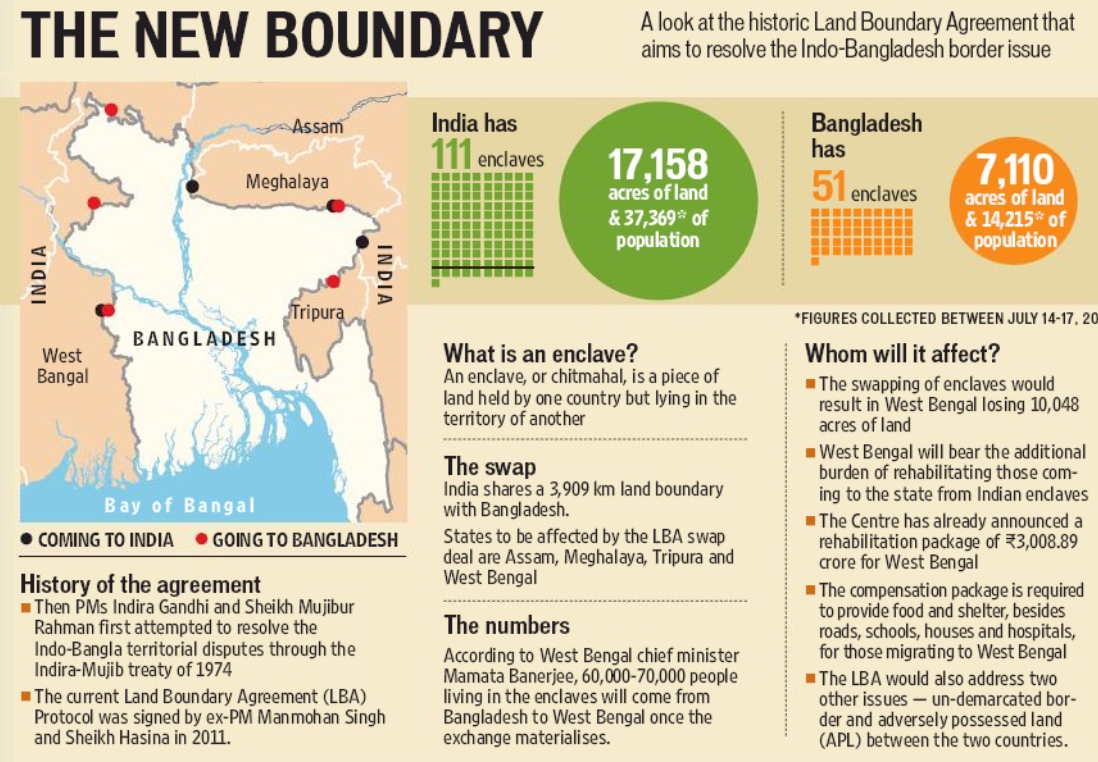India-Bangladesh Border Fencing Dispute: Key Issues Explained
Why in the news?
India and Bangladesh summoned each other’s envoys over disagreements regarding border fencing construction by the BSF. Bangladesh claims the move violates the 1975 border agreement, while India maintains compliance with all protocols and agreements.
Recent Developments
- India and Bangladesh summoned each other’s envoys over disagreements on fencing along their border.
- Bangladesh’s Ministry of Foreign Affairs expressed concerns about the unauthorized construction of fences by India’s Border Security Force (BSF), violating prior agreements.
- India countered, stating that all protocols were followed during the construction process.
Challenges in Border Fencing
- India shares a 4,096.7 km border with Bangladesh, making it the longest international border with any neighbor.
- Construction of fences is hindered by terrain, local objections, and adherence to the 1975 Joint Border Guidelines, which prohibit structures within 150 yards of the boundary.
- Some areas, such as Dahagram-Angarpota (a Bangladeshi enclave in India), require special considerations due to their location.
- Villages along the border often fall within the fencing line, necessitating gates for movement. Timing and emergencies are coordinated with local authorities.
Core Disagreements
- Bangladesh opposes Single Row Fencing (SRF), considering it a breach of the 1975 agreement and inconvenient for residents.
- India clarifies that the SRF aims to curb cross-border crimes and illegal migration rather than serve a defensive purpose.
- Smart fencing, equipped with surveillance gadgets, is also contested by Bangladesh, citing potential security concerns.
- Approximately 5% of the border in Bengal has been fenced, but challenges persist, especially in riverine areas, where fencing is unfeasible.
This ongoing issue highlights the need for enhanced diplomatic efforts and mutual agreements to resolve the disputes effectively.
Sources Referred:
PIB, The Hindu, Indian Express, Hindustan Times




